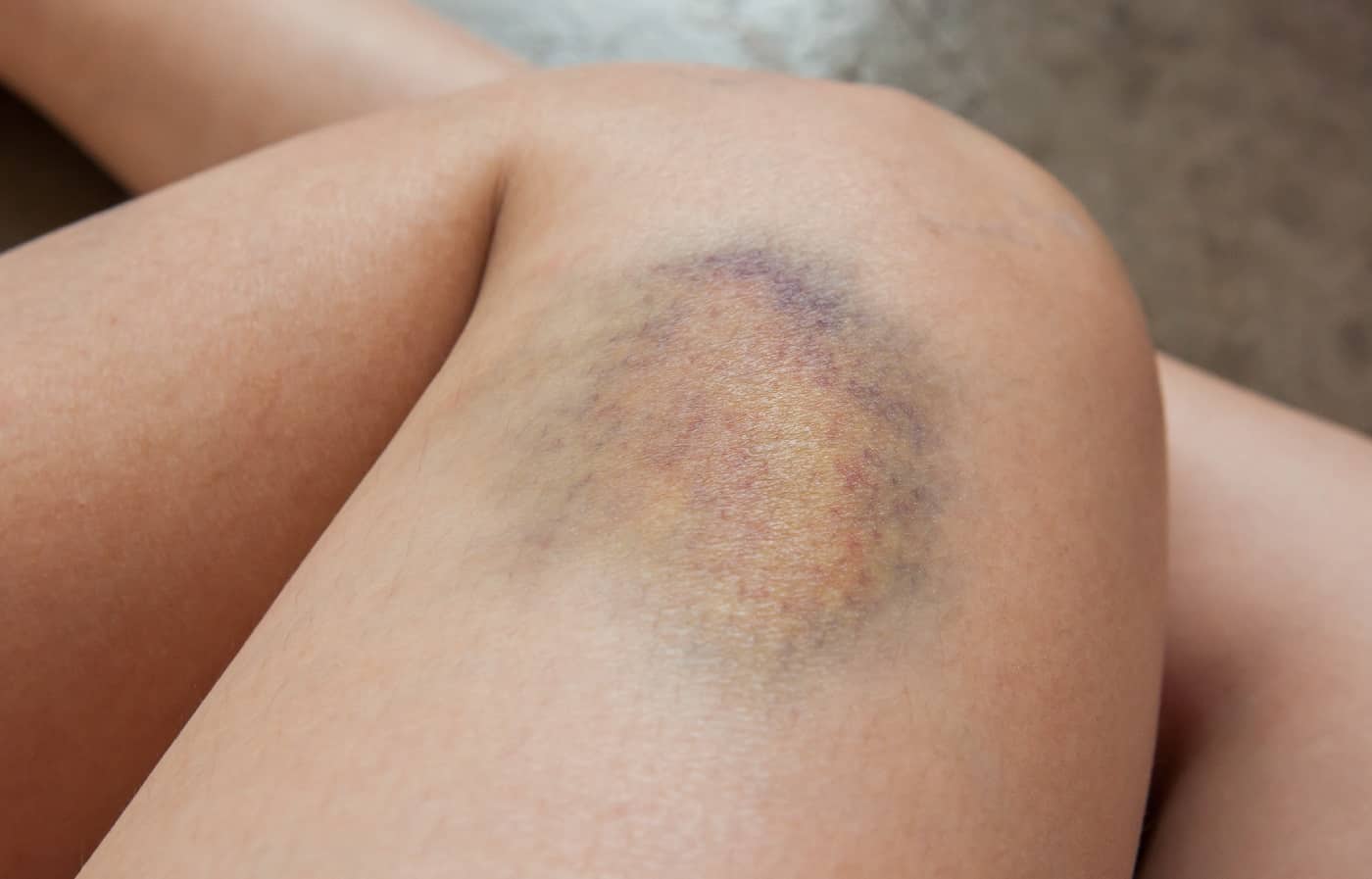Most people associate blood clots with Deep Vein Thrombosis (DVT), but there are other signs and symptoms of clotting. Before we go into what a blood clot looks like and the symptoms, it’s important to know what a blood clot is. A blood clot is blood that has gone from a liquid state, to more of a gel-like – or even fully solid – state. Blood clots are caused by a few things, but most commonly either due to injury, or because of plaque buildup in the arteries. Typically, we can’t see blood clots, but if you’re (un)lucky enough to see one, they are jelly-like clumps of blood that vary in size and consistency. Now that you know the basics about blood clots, it’s time to look at the symptoms.
1. Bruises
A potential (but not definite) symptom of a blood clot is bruising. If you’re bruised, it could mean you injured yourself, or that you have thinner skin or a blood disorder. Presence of a bruise could also mean that you have a hematoma. Hematomas form when blood pools outside of a blood vessel, whereas bruises form when small veins under the skin break. A hematoma could be caused by trauma, bone fractures, or as a side effect of some medications. Now, if you have a bruise or a suspected hematoma, it doesn’t mean you have to go to the doctor or hospital. If the bruise persists and is accompanied by any of the other symptoms listed here, it might be worth getting checked out.
